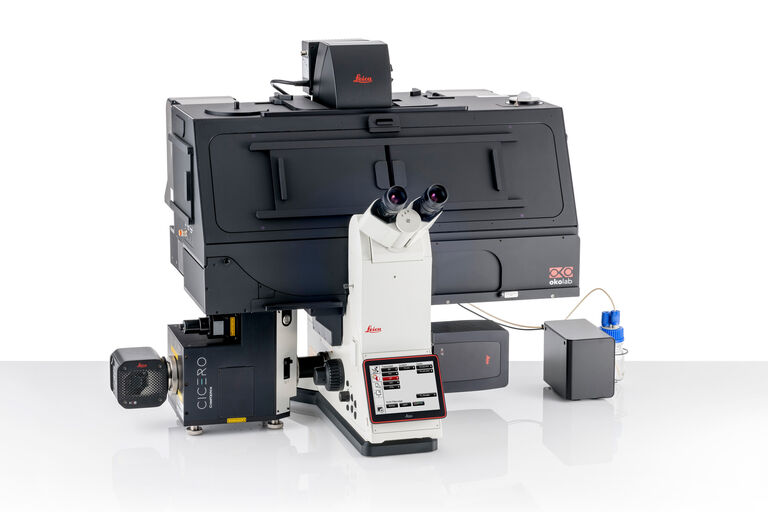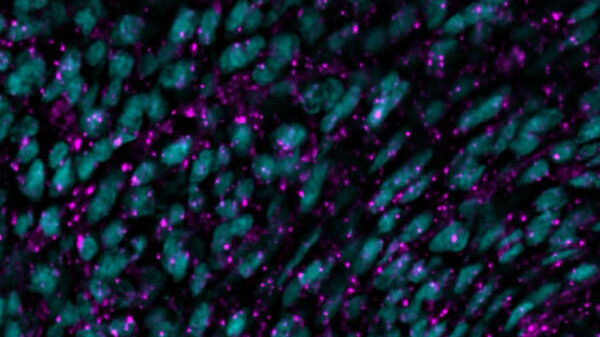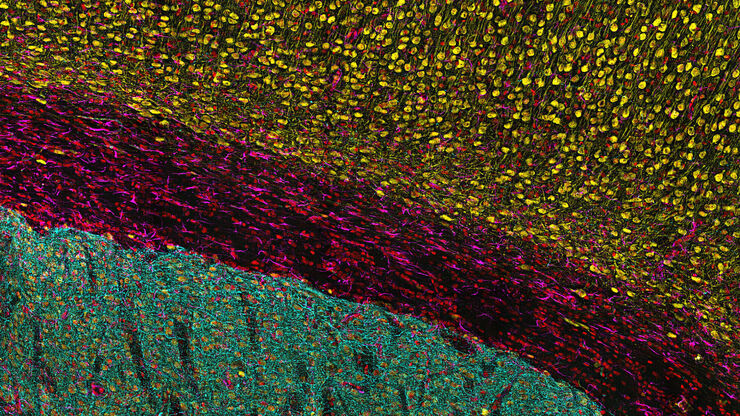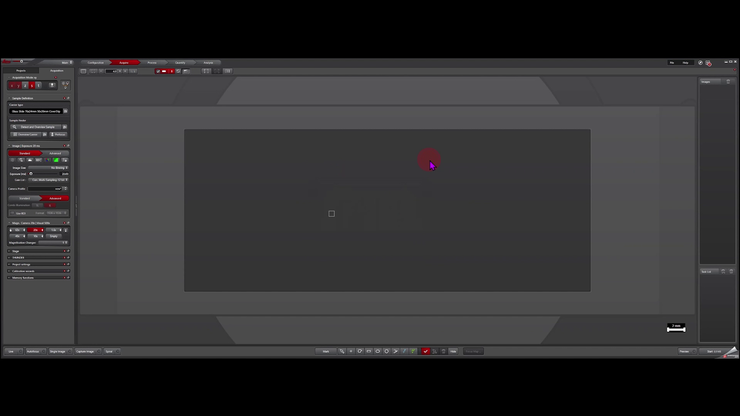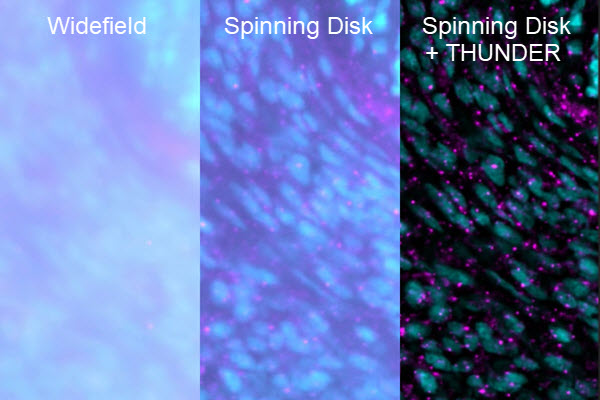THUNDER Imager Cell Spinning Disk
Struggling to navigate complex samples? Discover the power of combining THUNDER technology with the CrestOptics CICERO spinning disk.
This synergistic pairing allows you to get higher quality data and clearer details from 3D samples, delivering a deeper and more detailed view of your research.
Get a clearer picture with THUNDER and spinning disk
Extract more convincing high-quality data from 3D samples by applying THUNDER to your spinning disk confocal images.
While spinning disk alone provides powerful optical sectioning, applying THUNDER eliminates residual out-of-focus light for greater contrast and resolution, unlocking even more details.
Extract more data from 3D samples in less time
Imaging diverse and challenging 3D samples
Get more statistically significant data from challenging 3D samples in less time with high-throughput spinning disk confocal. Image a wide variety of sample types with reduced phototoxicity - all in a simple-to-use and versatile platform.
Image samples such as
- Live cells
- 3D cell cultures
- Organoids and spheroids
- Model organisms
- Thick tissue samples
Enhance imaging efficiency with intelligent navigation technology
Quickly bring your fragile samples into focus, reducing the time to obtain meaningful results and preserving sample integrity.
Spinning disk systems are commonly used to image large sensitive samples, which can be hard to navigate. Now you can create a rapid, in-focus, overview image of your entire sample with Sample Finder. This powerful feature allows you to pinpoint key regions of interest while preserving the spatial context of your data.
Adaptive Immersion: No compromise
For many spinning disk applications, imaging samples in aqueous media is essential. For the clearest image quality, water immersion objectives are ideal as they minimize optical aberrations. However, using water objectives often proves impractical due to evaporation challenges.
Now you never have to compromise on your choice of objective because our Adaptive Immersion cap, with its embedded sensor, continuously monitors and maintains immersion throughout your experiments.
More convincing data with SmartCORR
Get stunning, reproducible results with 3D samples every time. Harness the ease and precision of SmartCORR to automatically optimize your objective correction collar to perfectly match your sample, dramatically reducing sample-dependent spherical aberrations and improving image quality. Say goodbye to human error in your data as well as the tedious task of fine-tuning settings.
Get the ultimate live cell imaging system by combining Sample Finder, THUNDER, Adaptive Immersion and SmartCORR with your spinning disk system.
